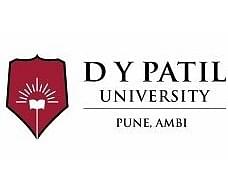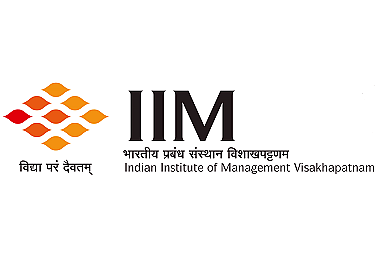Ph.D. in Statistics: 15 Common Questions Answered
Pursuing a Ph.D. in Statistics is a challenging yet rewarding
journey that opens up numerous opportunities in academia, industry, and
research. For prospective students, there are often many questions regarding
the program, admission process, career prospects, and more. In this comprehensive
guide, we address 15 common questions to help you navigate your path towards a
Ph.D. in Statistics.
1. What is a Ph.D. in Statistics?
A Ph.D. in Statistics college is an advanced degree that focuses on the
theoretical foundations and practical applications of statistical methods. It
involves rigorous coursework, original research, and the completion of a
dissertation. This degree prepares students for careers in academia, industry,
government, and other sectors where statistical analysis is crucial.
2. What are the prerequisites for a Ph.D. in
Statistics?
Prerequisites typically include:
A bachelor's or master's degree in statistics, mathematics, or a related
field.
Strong mathematical foundation, including coursework in calculus, linear
algebra, and probability theory.
Research experience and familiarity with statistical software can be
beneficial.
3. How competitive is the admission process for a
Ph.D. in Statistics?
Admission to a Ph.D. program in Statistics can be highly competitive.
Factors that enhance your chances include:
A strong academic record, particularly in mathematics and statistics
courses.
High scores on standardized tests such as the GRE.
Research experience and relevant publications.
Strong letters of recommendation from faculty or professionals in the
field.
A well-crafted statement of purpose.
4. What is the typical duration of a Ph.D. in
Statistics?
The duration of a Ph.D. program in Statistics varies but generally takes
around 4-6 years to complete. The timeline includes coursework, comprehensive
exams, research, and the completion of a dissertation.
5. What are the core components of the Ph.D.
curriculum?
The core components typically include:
Advanced coursework in statistical theory and methods.
Elective courses in specialized areas such as Bayesian statistics,
machine learning, biostatistics, or econometrics.
Comprehensive exams to assess mastery of fundamental concepts.
Original research leading to a dissertation.
6. What research opportunities are available during
the Ph.D. program?
Ph.D. students in Statistics have access to a variety of research
opportunities, including:
Collaborating with faculty on ongoing research projects.
Conducting independent research on topics of interest.
Participating in interdisciplinary research with other departments such
as computer science, biology, or economics.
Engaging with industry partners for applied research projects.
7. How important is the dissertation in a Ph.D.
program?
The dissertation is a critical component of the Ph.D. program. It
involves conducting original research that contributes to the field of
statistics. The process includes:
Identifying a research question.
Developing a research plan and methodology.
Collecting and analyzing data.
Writing and defending the dissertation before a committee of faculty
members.
8. What career opportunities are available after
completing a Ph.D. in Statistics?
Ph.D. graduates in Statistics have diverse career opportunities,
including:
Academic positions as professors or researchers in universities.
Industry roles such as data scientists, statisticians, and quantitative
analysts in sectors like finance, healthcare, and technology.
Government positions in agencies that require statistical expertise.
Consulting roles for organizations needing advanced statistical
analysis.
9. What is the earning potential for a Ph.D. in
Statistics?
The earning potential for Ph.D. in Statistics is generally high.
According to various sources, the median salary for statisticians and data
scientists with advanced degrees can range from $100,000 to $150,000 annually,
depending on the industry and location.
10. How can one finance a Ph.D. in Statistics?
There are several ways to finance a Ph.D. in Statistics, including:
Research assistantships or teaching assistantships that provide a
stipend and tuition waiver.
Fellowships and scholarships offered by universities, government
agencies, and private organizations.
Grants for specific research projects.
Loans or personal savings, though these are less common for Ph.D.
students who often secure assistantships or fellowships.
11. What skills are essential for success in a
Ph.D. program in Statistics?
Key skills include:
Strong mathematical and statistical knowledge.
Proficiency in statistical software and programming languages such as R,
SAS, Python, or MATLAB.
Research and analytical skills.
Ability to communicate complex ideas effectively, both orally and in
writing.
Critical thinking and problem-solving skills.
12. What are the main challenges faced by Ph.D.
students in Statistics?
Challenges can include:
Balancing coursework with research responsibilities.
Managing time effectively to meet various deadlines.
Navigating the pressure of producing original research and publishing
findings.
Securing funding for research projects.
Maintaining motivation and resilience through the demanding Ph.D.
journey.
13. How can students choose the right Ph.D. program
in Statistics?
Choosing the right program involves considering factors such as:
Faculty expertise and research interests.
Available resources and facilities, including statistical software and
computing power.
The program’s reputation and ranking.
Opportunities for interdisciplinary research and industry collaboration.
Location and overall fit with personal and professional goals.
14. How important is networking during a Ph.D. in
Statistics?
Networking is crucial for several reasons:
Building relationships with faculty and peers can lead to research
collaborations and mentorship opportunities.
Attending conferences and workshops allows students to present their
research, receive feedback, and stay updated on the latest developments in the
field.
Networking can lead to job opportunities and professional connections in
academia and industry.
15. What are the future trends in the field of
Statistics?
Future trends include:
Increased use of big data and data science techniques.
Advances in machine learning and artificial intelligence applications.
Growing emphasis on biostatistics and healthcare analytics.
Development of new statistical methodologies for complex data
structures.
Continued focus on the ethical use of data and privacy concerns.
Conclusion
Pursuing a Ph.D. in Statistics is a significant commitment that
requires dedication, perseverance, and a passion for research and data
analysis. By understanding the prerequisites, navigating the admission process,
and preparing for the challenges ahead, you can successfully embark on this
academic journey. With a Ph.D. in Statistics, you will be well-equipped to
contribute to the field, whether through academia, industry, or government
roles, and to shape the future of statistical science.












